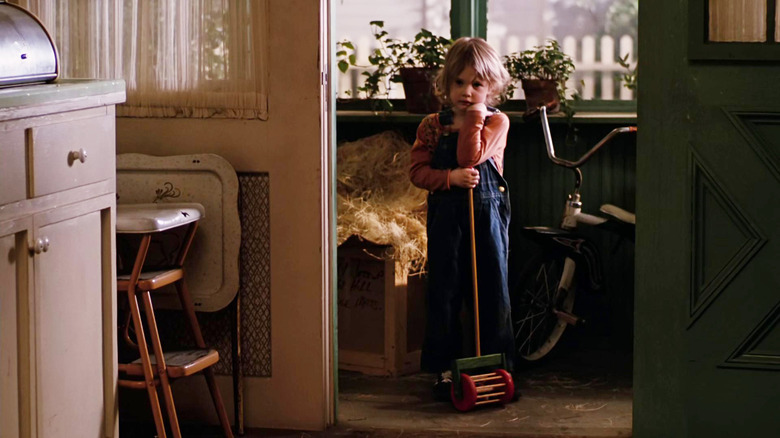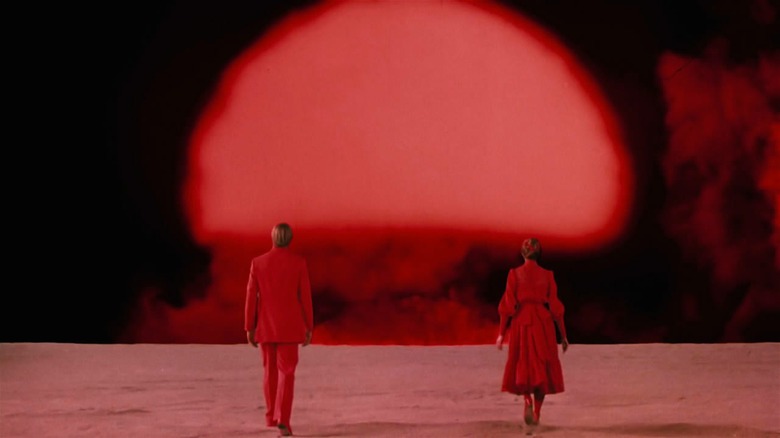It’s an understatement to say that Ken Russell made distinctly twisted, controversial films, infusing new meaning into the term “unpredictable.” Sure, this brand of filmmaking is a bit of an acquired taste, but it has merit no less, as his experimental, no-holds-barred approach led to some truly unique cinematic experiences. Apart from his rather mainstream (and brilliant) “Women in Love,” Russell made fictionalized retellings of real events, such as his “Gothic,” which expands upon the Shelleys visiting Lord Byron in Villa Diodati within a jarring horror framework. More controversial works include “The Devils,” and Russell’s 1980 sci-fi horror feature “Altered States,” itself a psychedelic-adjacent trip into a bizarre, delirious labyrinth about identity and altered states of consciousness.
Two mega-popular actors made their acting debut in “Altered States:” William Hurt, who plays leading man Eddie Jessup, and Drew Barrymore, who plays Eddie’s younger daughter, Margaret Jessup. Barrymore was only five when she starred in Russell’s film, which acted as the entry-point for her bigger, more memorable roles in films like “Firestarter” and “E.T. the Extraterrestrial” as a child actor. Barrymore’s Margaret didn’t have many speaking lines, but this small role nevertheless helped kick off her long-standing Hollywood career.
Let’s talk a bit more about “Altered States,” including how it served to showcase Hurt’s incredible range and flexibility as an actor, and why this oft-overlooked film deserves to be revisited. Although every Russell film embodies an almost erratic quality, “Altered States” is one of his most methodical meditations on the price of knowledge deemed forbidden for a reason.
Altered States is a thoroughly enjoyable fever-dream
In “Altered States,” Columbia University psychopathologist Eddie Jessup arrives at a startling hypothesis during his research on the human mind: Although our waking states define our reality, the other states of consciousness are equally important to our sense of self. To test out this theory, Eddie begins experimenting with a sensory deprivation tank to induce these states, only to be met with unsatisfactory results. Although Eddie keeps researching the topic, he only stumbles on a breakthrough after a decade.
Now a professor at Harvard, Eddie, who is also a father to two children and on the brink of divorce by this point, meets two of his friends along with his wife, Emily (Blair Brown). This conversation takes Eddie to the Hinchi tribe in Mexico, where he undergoes an intense psychedelic experience that shatters his fabric of reality. This is when Russell reels the audience in with visions both horrifying and over-the-top, where petrified bodies tangle on a razed, sandy terrain, signifying the disintegration of his relationship with Emily. Determined to replicate this experience, Eddie ventures down a dangerous rabbit hole, armed simply with a sample of the Hinchi drug and the determination to have an out-of-body trip so disorienting that his very DNA undergoes a baffling change.
Russell’s approach to these visions can often feel frustrating to some, but only if you’re desperately trying to make sense of the immediate symbolism and connect it to Eddie’s arc. “Altered States” is structured to mimic a psychedelic experience; it’s filled with beautiful, strange visions that quickly devolve into horrifying omens, mixing unconscious biases and desires with waking ones. There is a method to the madness here, working best when Russell plummets the story toward wayward definitions of logic, which are peppered with uncomfortable truths about humanity. The ending is melodramatic as heck, sentimental, and almost sweet, concluding this winding nightmare on a note of happiness that feels too good to be true. Maybe that is exactly how our most vivid waking dreams feel.




